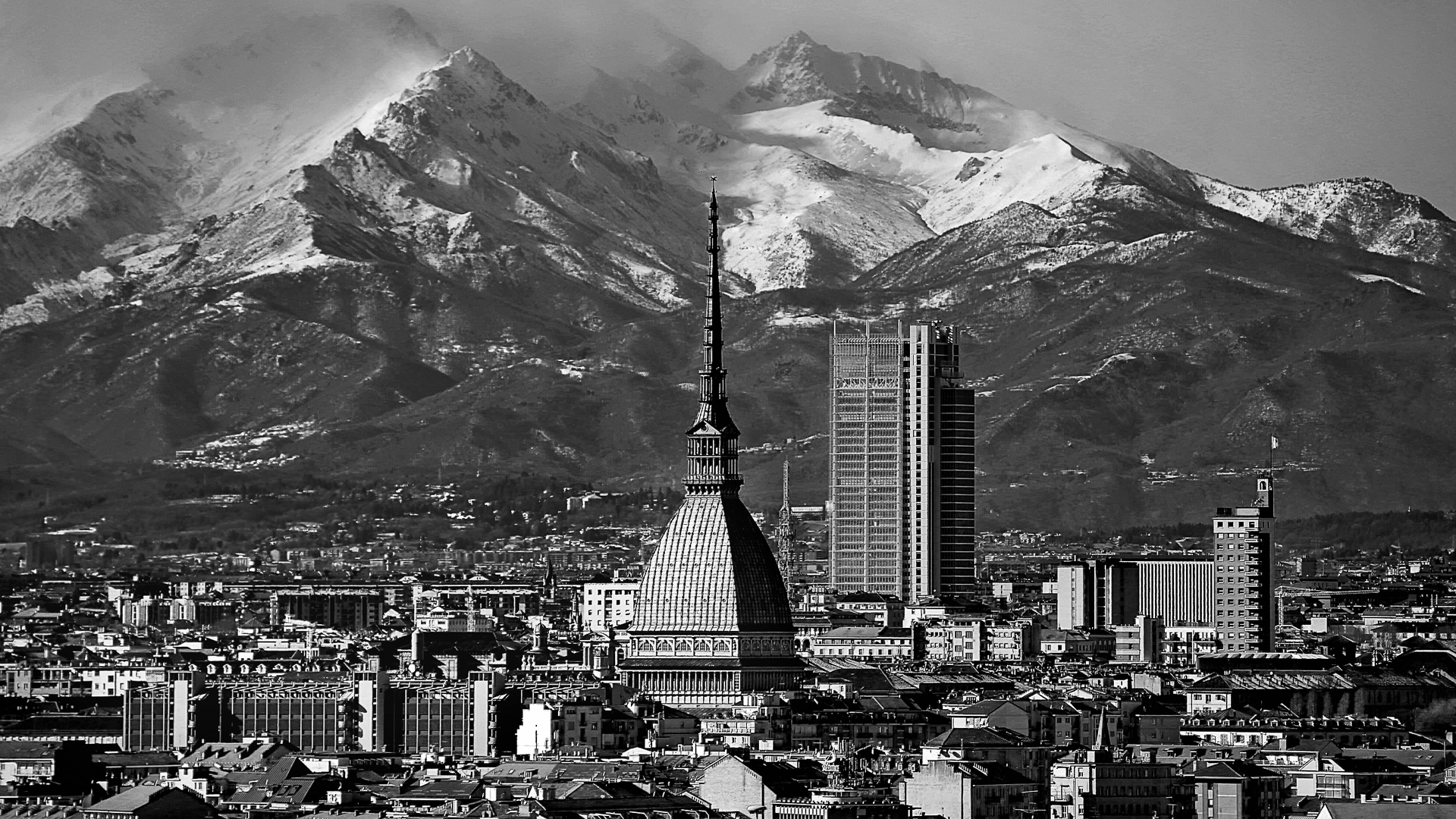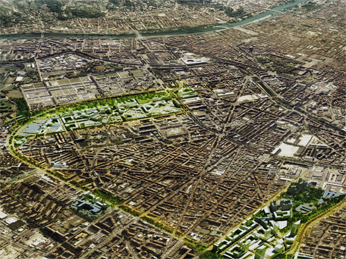

URBAN TRANSFORMATION AREAS
A1_CENTRAL AREA
The historical center of Torino has been developing around a grid of axes and baroque squares that from the Po river and Piazza Vittorio Veneto (one of Europe’s largest squares) stretches to Piazza Castello and Piazza Carlo Alberto, finally reaching Piazza Carlo Felice, overlooked by Porta Nuova railway station. At the end of the 1990s a renovation process of the city center has begun including not only a few of the most important historic buildings, but also (and especially) the system of public spaces. Plans have been made to pedestrianize squares and a few streets, resulting in a complex project that has become one of the major requalification works ever realized in the central area. Moreover policies and measures have been taken to reaffirm the importance of the historical area both as a cultural hub, thanks to the presence of museums, theatres and libraries, and as a knowledge centre, with the premises of the Università di Torino.
CAVALLERIZZA REALE COMPOUND
INDUSTRIAL
/prices n.a. (€/SQ.M.)
/rent n.a.(€/SQ.M./YR)
OFFICES
/prices 3200 (€/SQ.M.)
/rent 168 (€/SQ.M./YR)
RETAIL
/prices 3100 (€/SQ.M.)
/rent 168 (€/SQ.M./YR)
RESIDENCES
/prices 3400 (€/SQ.M.)
/rent 140 (€/SQ.M./YR)
A2_SPINA CENTRALE
Spina centrale is the boulevard that runs through the city from north to south. The creation of this central backbone has entailed the underground covering of the railway tracks and the realization of the Railway Loop. This boulevard passes through major areas of transformation and urban requalification, stringing out most of the main disused industrial areas of the city which from south to north are named: Spina 1, Spina 2 – with the new rail station of Porta Susa, the vast OGR (Officine Grandi Riparazioni) industrial complex and the Politecnico di Torino – Spina 3 and Spina 4 – with the new Rebaudengo station, entry point to the north of the city and new Metro terminus of underground Line 2. This urban transformation process, which started back in the mid 1990s, has achieved a radical urban renovation of the old image of the city but still needs to be completed through the implementation of a few major projects.

INDUSTRIAL
/prices n.a. (€/SQ.M.)
/rent n.a.(€/SQ.M./YR)
OFFICES
/prices 2250 (€/SQ.M.)
/rent 134 (€/SQ.M./YR)
RETAIL
/prices 2500 (€/SQ.M.)
/rent 204 (€/SQ.M./YR)
RESIDENCES
/prices 3100 (€/SQ.M.)
/rent 136 (€/SQ.M./YR)

A3_NORTH-EAST
With a project called Variante 200, Torino has started developing 1 million sqm. V200 is centered around the new underground railway and metro station, near the city’s main automobile gateway. Due its closeness to the city centre, it offers opportunities for retail, housing, offices, leisure, healthcare. The development involves the North-East area of the City covering up to 850,000 sqm. V200 experiences innovative development models: bottom-up approach, incremental growth, flexible infill, respect of the city logic and smartness are the leading principles. The City of Torino offers a scheme with the widest range for investment possibilities. The former industrial areas are now free from their previous destination and transformed into buildable plots. V200 marks Torino’s next claim as the international investment location. The development is guided by an International planning team.
GONDRAND AREA REGALDI AREA
INDUSTRIAL
/prices n.a. (€/SQ.M.)
/rent n.a.(€/SQ.M./YR)
OFFICES
/prices 2300 (€/SQ.M.)
/rent 122 (€/SQ.M./YR)
RETAIL
/prices n.a. (€/SQ.M.)
/rent n.a. (€/SQ.M./YR)
RESIDENCES
/prices 2300 (€/SQ.M.)
/rent 103 (€/SQ.M./YR)
A4_Corso Marche
The new avenue Corso Marche is the multimodal axis (car and train transport) that runs through the western portion of the metropolitan area of Torino and rapidly connects the Reggia di Venaria royal park (located to the north of the city) to the park of the Palazzina di caccia di Stupinigi (on the southern side of Torino). Therefore this new axis is important not only for mobility reasons, but also for a few major urban transformation plans that focus on its area such as the Alenia Area – a new district will be built featuring a residential and commercial zone – the new Piazza Mirafifiori – that will come out of the transformation process of the disused industrial area of Fiat Mirafifiori being carried out by TNE – and the new south Metro terminus of the underground Line 2.

INDUSTRIAL
/prices 495 (€/SQ.M.)
/rent 41(€/SQ.M./YR)
OFFICES
/prices 1750 (€/SQ.M.)
/rent 106 (€/SQ.M./YR)
RETAIL
/prices 1750 (€/SQ.M.)
/rent 149 (€/SQ.M./YR)
RESIDENCES
/prices 2000 (€/SQ.M.)
/rent 118 (€/SQ.M./YR)



